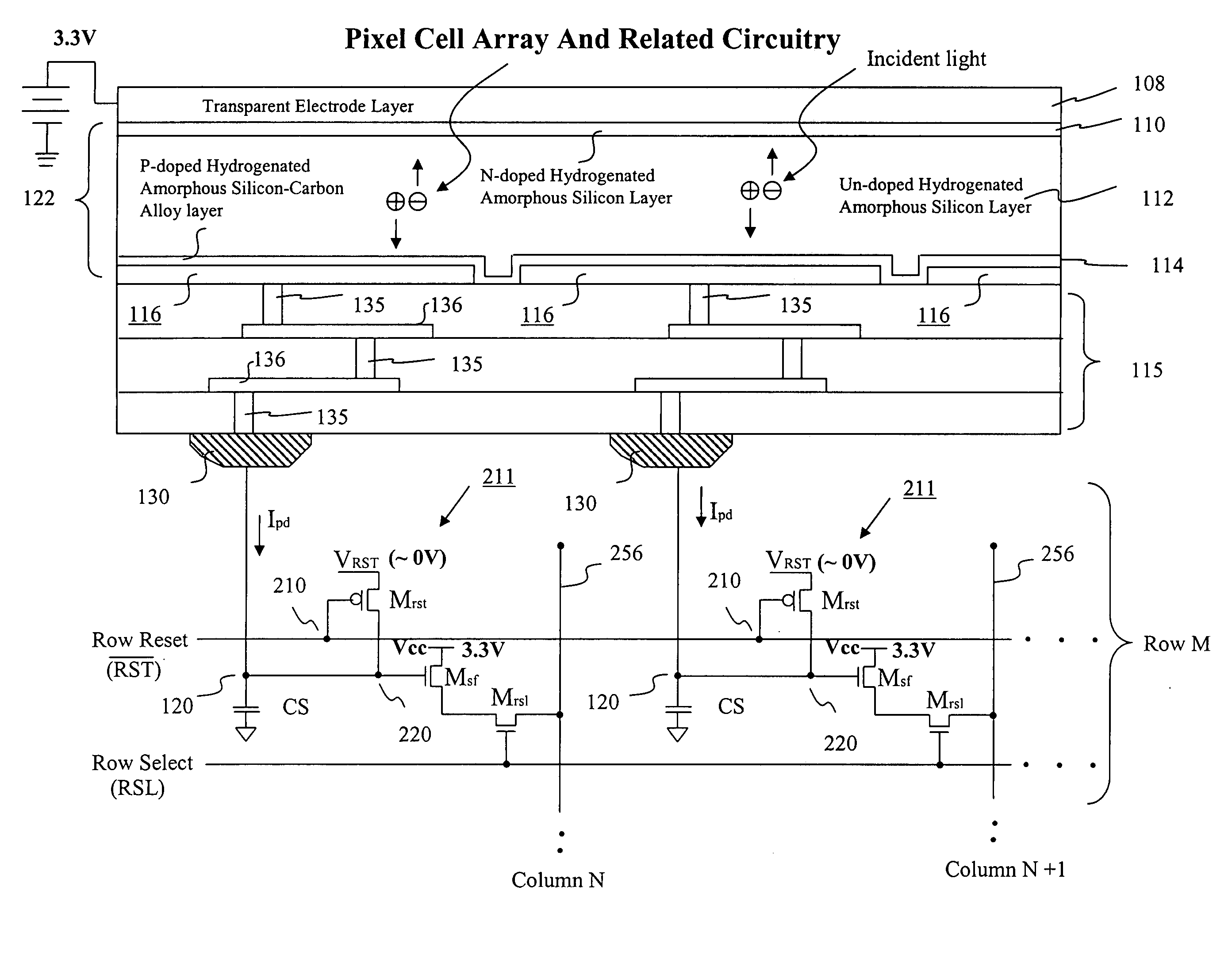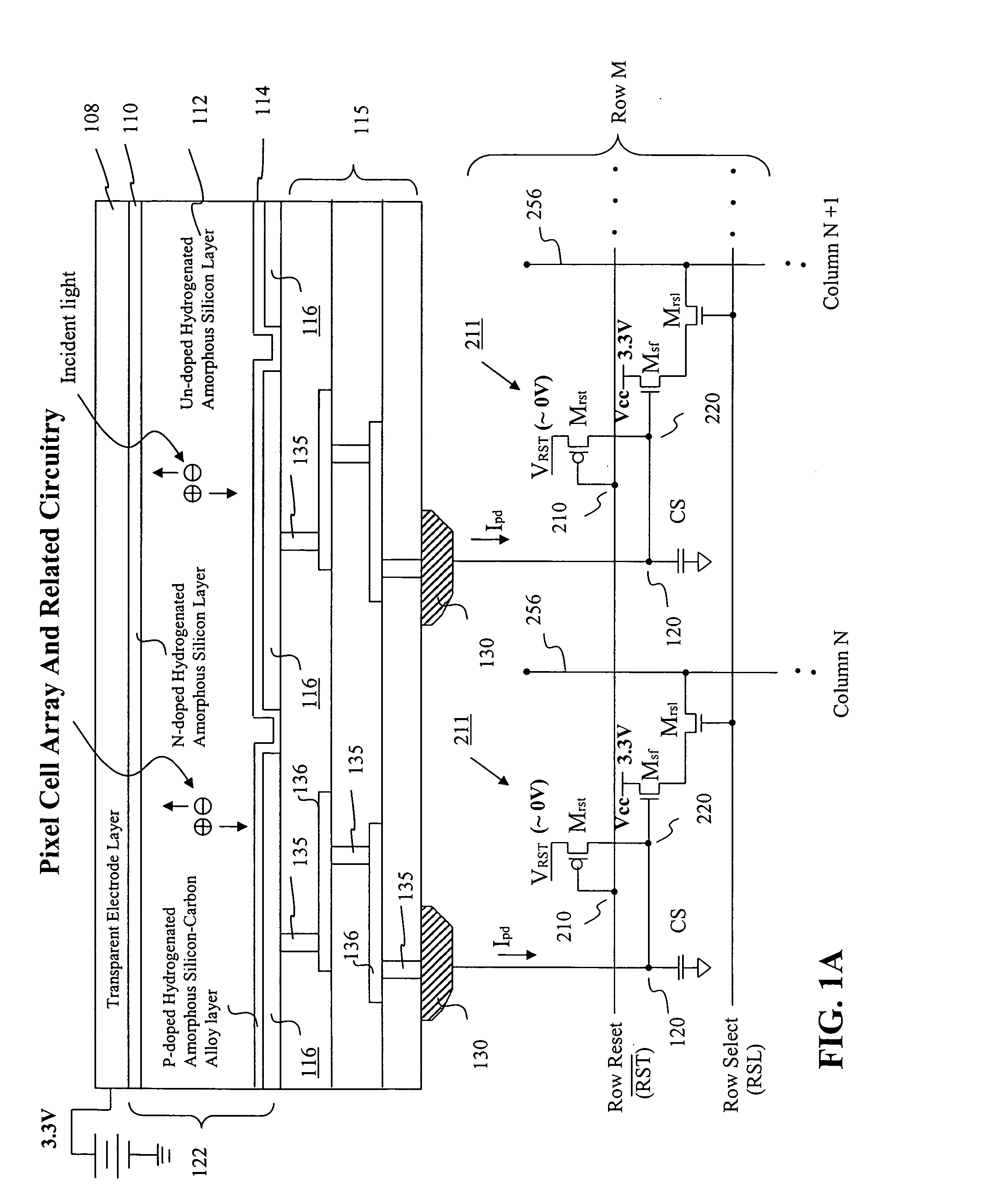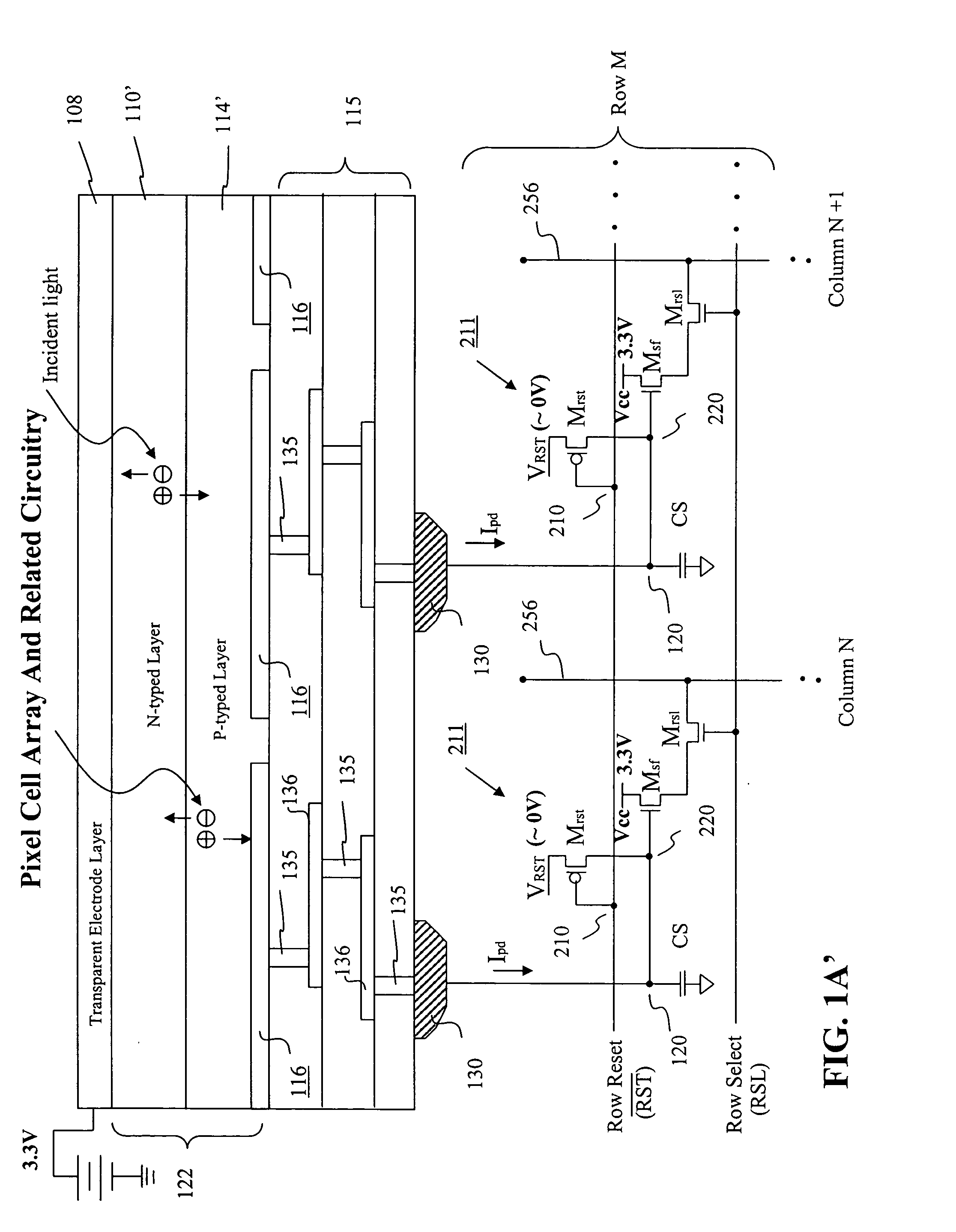Visible/near infrared image sensor
a technology of infrared image and sensor, which is applied in the field of image sensors, can solve the problems of limiting the achievable pixel count, low collection efficiency, and limited photoresponse of these sensors, and achieves enhanced sensitivity, pixel size and pixel count, and low electrical bias voltage.
- Summary
- Abstract
- Description
- Claims
- Application Information
AI Technical Summary
Benefits of technology
Problems solved by technology
Method used
Image
Examples
Embodiment Construction
Two Million Pixel CMOS Sensor
General Description
[0031] Some features of a two-million pixel CMOS sensor are shown in FIGS. 1A through 1H. This sensor is fabricated by depositing a multi-layer photodiode structure on top of an electronic readout array that is fabricated using complimentary metal-oxide semiconductor (CMOS) methods commonly utilized in integrated circuit manufacturing. Absorbed photons create charge pairs in the photodiode structure and the liberated electric charge migrates under the influence of an applied electric field to pixel pads in the CMOS readout array where the charges are stored on capacitors, each capacitor representing a pixel. Active pixel circuitry at each pixel produces an amplified voltage proportional to the stored electric charge. CMOS readout circuitry, that may be located at the periphery of each array column, further amplifies and digitizes the pixel signal. Additional pixel circuitry provides digital multiplexing of the digitized pixel signal...
PUM
 Login to View More
Login to View More Abstract
Description
Claims
Application Information
 Login to View More
Login to View More - R&D
- Intellectual Property
- Life Sciences
- Materials
- Tech Scout
- Unparalleled Data Quality
- Higher Quality Content
- 60% Fewer Hallucinations
Browse by: Latest US Patents, China's latest patents, Technical Efficacy Thesaurus, Application Domain, Technology Topic, Popular Technical Reports.
© 2025 PatSnap. All rights reserved.Legal|Privacy policy|Modern Slavery Act Transparency Statement|Sitemap|About US| Contact US: help@patsnap.com



